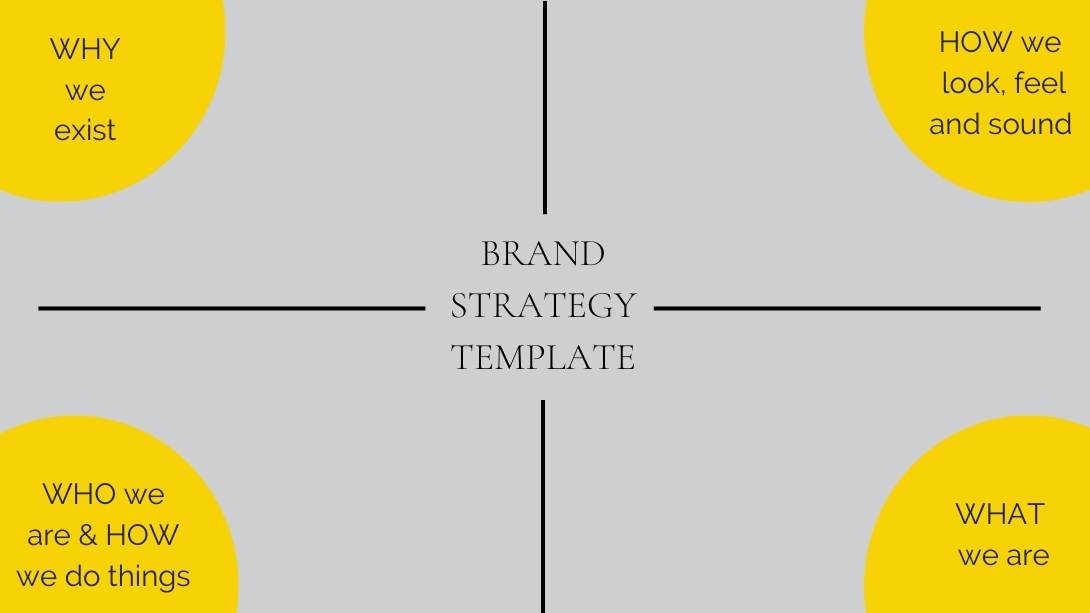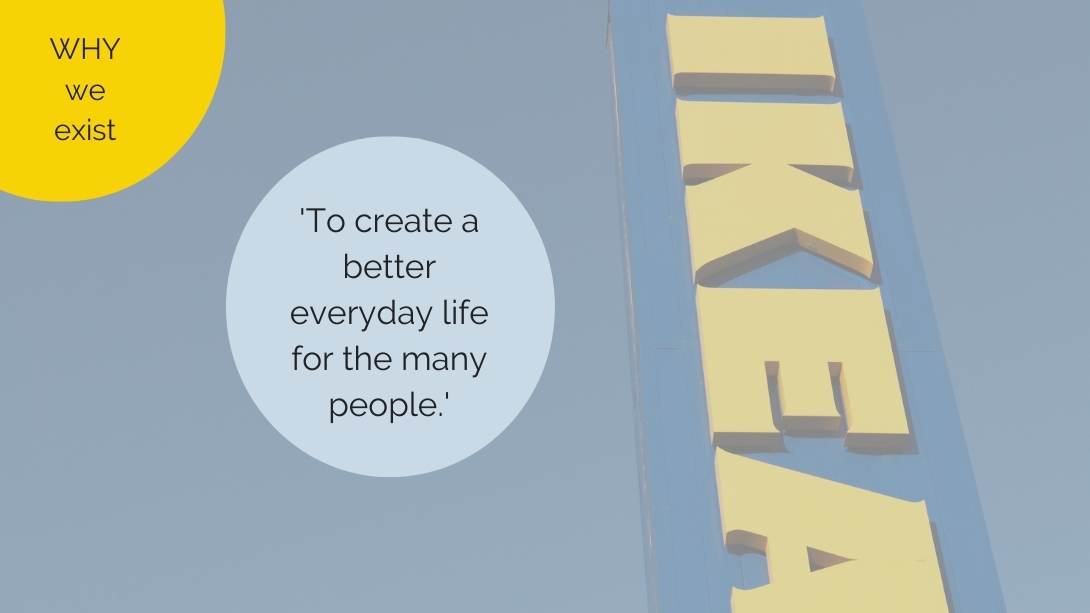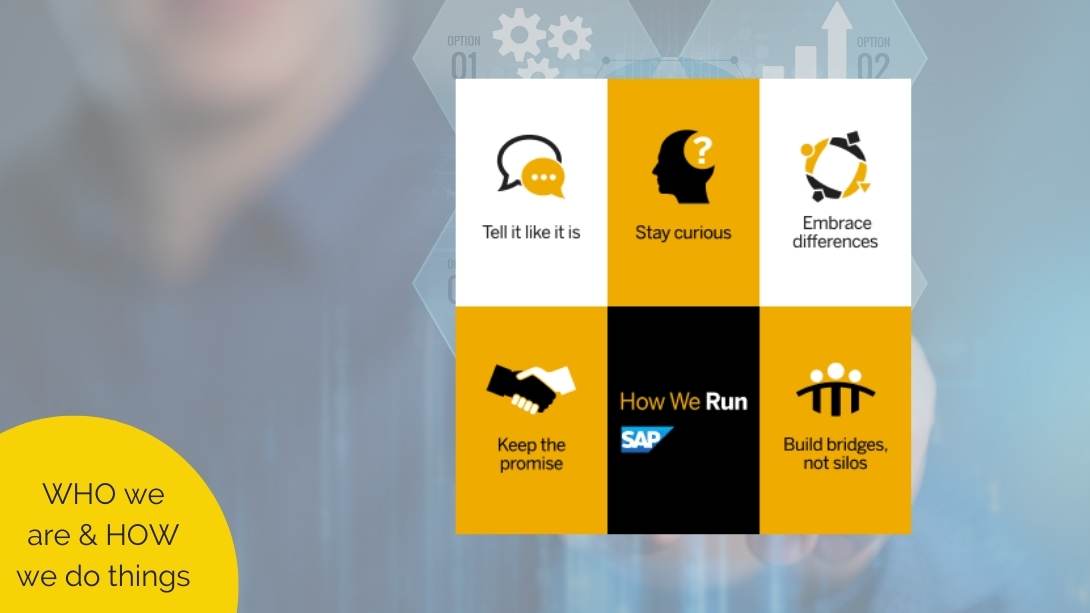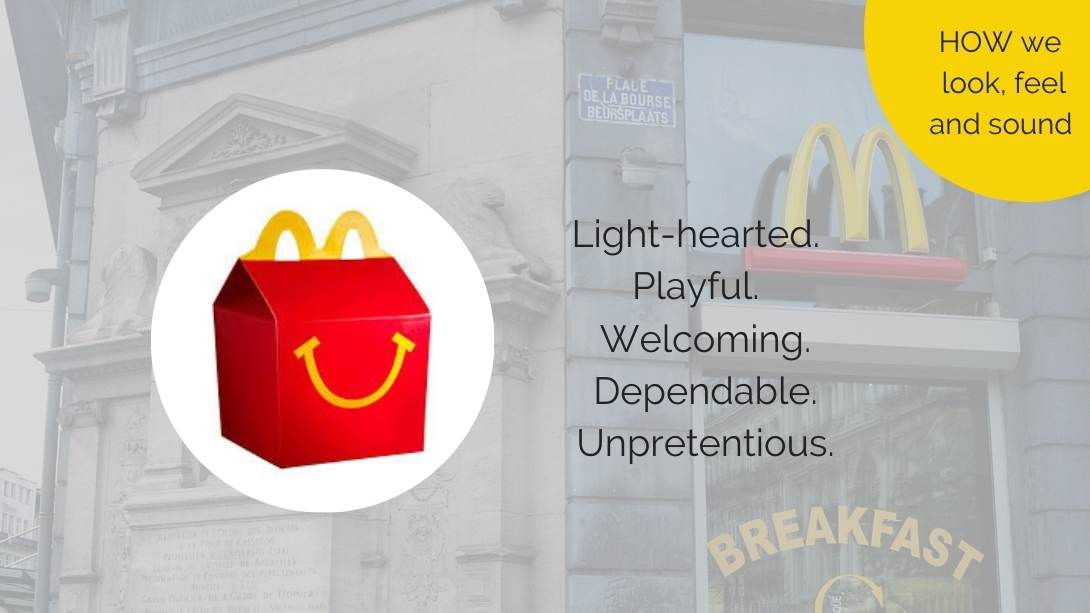A Simple Template For Brand Strategy That All The Best Brands Use

Do you find that jargon is one of the most confusing things about brand strategy?
Should you create a positioning or purpose? Mission or vision? Values or beliefs? A brand personality or archetype?
Wouldn’t it be great if there was just one brand strategy template that works for all brands?
Well, there is, and there’s no jargon in sight.
But it took me a while to get to the right brand strategy template.
10 years ago, I was as confused as you might be feeling.
For the first decade of my career as a brand strategist, I worked at some of the biggest branding and advertising agencies.
I had to sell the agency's brand strategy approach, which included a template that got blank looks from many clients.
It was full of jargon, focused on the thing the agency made most money from (design), and rarely engaged any of the C-suite.
But I knew that a brand strategy should be more impactful than this: it should give a business the clarity, focus and direction they needed to grow.
Because building a brand is not just about 'branding' - creating assets that help you signal what your brand is all about. It's about making a decision on what you want to stand for, and aligning a business around delivering this.
Read on for a template that will help you do just that.
The best template for brand strategy
When I started doing brand strategy independently, I spent 6 months studying the brand strategy frameworks used by the 181 world’s most valuable brands.
I wanted to know, once and for all, how the best brands defined what they stood for.
Did I need to be talking about purpose or mission, values or beliefs, personality or essence… etc. etc?
But what I found was that I was asking the wrong question.
Because there is no preferred terminology - even among the best brands in the world.
But there is one consistent approach and and it led to a simple template that I’ve used successfully over the past 10 years with clients across a multitude of industries.
The secret of creating a strong brand strategy starts with ignoring all the models, labels and terminology you see out there.
And answering instead these four questions.
- WHY do you exist?
- WHO are you and HOW do you do things?
- HOW do you look, feel and sound?
- WHAT are you?
All of the world’s best brands answer these questions and this is the only brand strategy template you need.

Let’s dive into some examples so you can see how this framework works.
Brand strategy template examples
As Simon Sinek says, let’s start with WHY.
BMW are one of the top 32 world’s most valuable brands.
They have consistently reinforced a clear idea of WHY they exist for years (over half a century in fact). They exist to provide ‘Sheer Driving Pleasure’.
Even though they have gone through identity, leadership and significant business changes, they have maintained the same focus on WHY they exist (what they call their slogan, or brand essence) and have continued to keep it relevant.
"Sheer Driving Pleasure’ describes the essence of the brand, which is very robust, resilient and future-oriented. The pleasure a person derives from their car has nothing to do with its drive technology – or whether it’s driven autonomously or not. Joy is universal. It is a human emotion that binds us all together. .. it will remain just as relevant in the future as it is now.”
Joachim Blickhäuser, Head of Corporate and Brand Identity at the BMW Group
IKEA have also been driven by the same WHY for decades.

IKEA’s answer to WHY they exist is 'to create a better everyday life for the many people.' They call it their vision.
In 1948 the founder introduced some furniture as a "sensible experiment" in their very first brochure.
Their founder, Ingvar Kamprad, wrote IKEA would offer more if customers showed “reasonable interest.”
They did. The story goes on to say:
In the next brochure, the entrepreneur described his focus with the headline “to the people of the countryside.” The IKEA founder refined this into the company vision “to create a better everyday life for the many people.” Who are these many people? They’re anyone, like Ingvar and other frugal, practical Smålandians, who value products with low prices and high quality – things made from being smart with resources and never tolerating waste.
Starting with WHY helped turn around the fortunes of Microsoft, whose stock price had stalled in 2014.
As CEO, Satya Nadella stated:
Job one was to build hope… We had to answer for ourselves what is the company about? Why do we exist?.. it was time to rediscover our soul- what makes us unique.
In 3 years, they generated $250bn in market value, stock soared 90% and they achieved 95% approval on Glassdoor.
Here's how they describe WHY they exist.

Did you notice that BMW call it a brand essence, IKEA call it a vision, and Microsoft call it a mission? It’s also often called a purpose.
There is no consistency in the terms used by the best CEO’s that define ‘WHY we exist’.
Mission, purpose and vision are all used interchangeably.
As McKinsey's study of the world's leading CEOs showed: ‘
Communications and HR professionals, academics and we as consultants can argue all want about the nuances of each term, but the fact remains that the best CEOs don’t worry much about the distinctions – what matters for them is to have a clear and simply articulated North Star for the company that redefines success, influences decisions, and inspires people to act in desired ways.’
What’s much more important is answering the question in the right way – not the label you give it.
As you can see - whether you're in retail, tech or automotive - the category doesn't matter.
The question really does.
A clear brand strategy template drives business growth
Getting to a clear and compelling answer to this question with your client may be your most important contribution to their business, since answering, and then activating an organisation to deliver on a strong WHY, has been linked to all sorts of growth outcomes:
10x better performance, 3x faster growth, 6x greater earnings, 46% greater market share gains, not to mention the impact on employee engagement, satisfaction and retention - all of which hit the bottom line. (See more on the value of brand strategy here).
So identify your answer carefully – with the right research inputs and leadership engagement, and as part of a cohesive brand strategy alongside the other questions to follow. (Here's some more tips on how to go about it).
And don’t get too carried away…
There are lots of problems with overblown ‘WHY’ statements.
In short: ensure it’s an authentic, relevant phrase that addresses all the people who will ensure the business thrives.
But don’t think your job’s done there…
Define WHO you are and HOW you do things – Values and Behaviours
Start with WHY – but don’t stop there. The next two questions you need to answer in the brand strategy template are ‘WHO are you and HOW do you do things?’
These are really important because they help people within an organisation understand what is expected of them and identify the behaviours needed for the organisation to achieve their WHY.
They are typically called values and behaviours, but other terminology like beliefs and principles are also frequently used. Whatever you want to call them, these are the foundation needed for a strong and aligned culture.
If you have a list that reads a bit like this: 'integrity, ‘collaborative/teamwork’, ‘open’, ‘accountable’, 'innovative' and 'customer success' then bear this in mind...
A Booz Allen Hamilton/Aspen Institute study across 365 companies and 30 countries showed that 90% of organisations mention integrity, 76% trust and teamwork, 69% honesty and openness, 68% accountability, 60% innovative/entrepreneurial.
And a HBR study showed that 55% of all Fortune 100 companies claim integrity is a core value, 49% espouse customer satisfaction, and 40% tout team-work.

Why does this matter? In the words of Patrick Lencioni in 'Make Your Values Mean Something' in Harvard Business Review,
Most values statements are bland, toothless, or just plain dishonest. And far from being harmless, as some executives assume, they’re often highly destructive. Empty values statements create cynical and dispirited employees, alienate customers, and undermine managerial credibility… Coming up with strong values—and sticking to them—requires real guts. Indeed, an organization considering a values initiative must first come to terms with the fact that, when properly practiced, values inflict pain.
So let’s look at some good ones.
Values examples from the world’s most valuable brands
Take SAP’s answers to HOW they do things. They have 5:

These are simple, actionable, memorable AND they are explained as 'How we Run' - which links to WHY they exist - To help businesses run better.
It’s really important that you answer WHO you are and HOW you do things in relation to WHY you exist. It needs to make sense as a narrative like this:
"We exist to do this (our WHY). So we need to act in this way (WHO we are and HOW we do things)."
Their success rests on each other.
Uber refreshed their definition of WHO they are and HOW they do things in 2021 to bring them more in line with their WHY.
They include interesting articulations like:
See the forest and the trees: Know the details that matter
Building for the intersection of the physical and digital worlds at global scale requires seeing the big picture and the details. Knowing the important details can change the approach, and small improvements can compound into enormous impact over time.'
And:
Go get it: Bring the mindset of a champion
Our ambition is what drives us to achieve our mission. How we define a champion mindset isn’t based on how we perform on our best days, it’s how we respond on the worst days. We hustle, embrace the grind, overcome adversity, and play to win for the people we serve. Because it matters.
How do you create strong values and behaviours?
Most often, you get to strong values by deeply understanding the heritage of an organisation – how it’s acted in the past and why, what the founder stood for, what stories are told around the halls. It requires you to spend time listening to employees – up and down an organisation.
The recrafting of Uber’s values began in 2017. After almost two dozen focus groups of employees, more than 1,200 ideas were submitted and were voted on 22,000 times.
It doesn’t always need to be this big of a process! But it must engage a cross-section of employees.
It’s all part of the same process of insight gathering that gets you to a great WHY statement at the same time.
Dive deeper into writing good values here, and the 3 ways values are typically written, here.
The Final Two Questions To Get Your Branding Strategy Right
Defining WHAT we are and HOW we look, feel and sound are the other two questions every brand has to answer.
You might be most used to talking about 'brand positioning' and 'brand personality/brand attributes': the labels typically used for WHAT a brand is/does and HOW it wants to look, feel and sound.
Defining HOW you want to look, feel and sound is critical to guide anyone you partner with, or brief internally, who is responsible for bringing a brand to life.
McDonald’s have 5 words they use:

When you think about their ads, the copy they use ("Great tasting coffee. Simple"), the welcome board game they have create for new employees, their happy meals – they all emanate from this guidance.
Three words guide HOW Apple look, feel and sound:
Simplicity.
Creativity.
Humanity.
They call these their three lenses.
According to Tor Myhren, VP of Marketing Communications at Apple, “If a product is not made up of these things, it’s not Apple”.
These words also inform all of Apple's infamous marketing campaigns, as Mark Ritson shares here.
(As the world’s most valuable brand, Apple’s brand strategy can teach us a lot. See the whole thing here).
Steve Jobs knew from the beginning that brand success is all about being clear on the answers to these questions!

Finally, you've got to clear on WHAT you are - how to describe the business that you're in.
It's often called a positioning - but IKEA call this their business idea.
If you’ve ever visited IKEA, you’ll have probably worked out what our business idea is – “to offer a wide range of well-designed, functional home furnishing products at prices so low that as many people as possible will be able to afford them.”
Ingvar Kamprad, IKEA Founder
People need to understand what your product, service or organisation is - so work just as hard on this as the other answers. It can help you stand apart from your competition.
Take the world’s leading luxury hotels.
Corinthia describe themselves as ‘a family of uplifting destinations.’
Every word has been carefully chosen. It is rooted in history as a family-owned business, with Mr Pisani, the enigmatic founder still acting as Executive Chairman, and a strong sense of belonging and family pervading the culture. Their WHY is about uplifting the lives of guests, colleagues and the communities they operate in, so being uplifting also permeates what they are and how they look, feel and sound. And every property is a true destination within a destination – a must-stay in their cities. (Just look at the view from their London hotel...Swoon).

Their competitors define what they are in different ways:
The Dorchester Collection describe what they are as: ‘Iconic hotels in iconic places’.
Oetker Collection describe themselves as, ‘A curated collection of masterpiece hotels.’
Peninsula describe themselves as ‘An inimitable legend of hospitality.’
Describing what you are doesn't have to be just about the industry you are in. Work hard on this statement too to create something that has a deeper meaning and helps to build those associations in people's minds that you want to be known for.
In summary:
The secret of creating a strong brand strategy starts with ignoring all the models, labels and terminology you see out there.
And answer instead these four questions.
- WHY do you exist?
- WHO are you and HOW do you do things?
- HOW do you look, feel and sound?
- WHAT are you/what do you do?
This is genuinely the only brand strategy framework you need.
I’ve tried and tested it across multi-billion dollar brands, national icons, start-ups and non-profits.
It speaks the language of the C-suite, cuts out jargon and is simple, yet comprehensive.
The whole purpose of brand strategy is to help to bring clarify, focus and direction to a business.
Answer the questions in this brand strategy template and you’ll be doing just that.
If you want to get completely clear and confidence doing and selling brand strategy, Brand Strategy Academy is the answer. Grab your spot here.
Get brand strategy smarter in 5 minutes a week
Join our weekly newsletter. No fluff. Sent Fridays.
By clicking the button, you agree to receive the 'Brand Strategy Smarter' newsletter and marketing emails from Brand Strategy Sarah about our products and services. Unsubscribe at any time.


